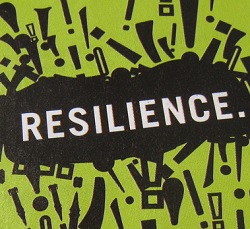Chances are, you have a mobile phone on your person right now. It’s the same for many children, so how can schools stop these devices from being a portable scourge? Gordon Christiansen, CEO at Mobile Guardian, discusses the options available to teachers.

There has been a dramatic rise in mobile devices crossing back and forth between the school gates, and be it smartphones, tablets, notebooks or laptops, whether they are parent-owned or school-owned, there remains a duty of care that schools must practice. Schools have a responsibility to ensure that students’ mobile access to the world is properly managed and protects them from harm.
A student’s behaviour in the classroom can be determined by a whole host of different factors, and their relationship with you as their classroom teacher is fundamentally the most important factor. However, in order to get good behaviour in a classroom with an individual, a lot more is needed than just sanctions and high expectations. This is where positive behaviour for learning comes in to play.
Schoolchildren possess growing, developing minds, ones which can often wander. Therefore, it’s important for teachers to know how to retain their attention. To discuss this further, Innovate my School regular Adam Lewis discusses how to ‘teach like a champion’.

For the following weeks, I am focussing on creating a strong classroom culture by adhering to the techniques advocated by Doug Lemov in his 'Teach Like a Champion' manual for teachers.When I posted on Twitter that I was starting this experiment, Doug kindly tweeted me asking for me to let him know which techniques I was going to focus on first.
Although I have been teaching my current classes for over a term, I still feel that some of them don't have the kind of classroom culture that I expect. Establishing this is vital for any relationships to exist and develop, so this is the first 'section' of the techniques that I will focus on.
Week 1 of my 'Teach Like a Champion' marginal gains experiment and I am concentrating on '100%' and 'Sweat the Details.

Have you ever wondered why some teachers seem to get less stressed than others?
Maybe they have better behaved students or they just work in a 'nicer' school. Both answers are plausible. However, a much more likely explanation is that your stress-free colleagues are more resilient than you.
Resilience is what makes the difference between success and failure, and also between stress and serenity. It’s crucial for your wellbeing and performance.
By growing your own level of resilience you will find you have more energy and enthusiasm to help your students achieve more too! Here are a few simple strategies:

Remember that moment when you get home from work or back from a night class and your partner’s in a bad mood? How long does it usually take you to work it out? Hours? Minutes? A few seconds?
Most of the people I ask say a few seconds, some even go as far to say that they can tell before they’ve even stepped foot in the room. However long it takes you, students are no different, they’ll make up their mind whether the lesson will be enjoyable or not within the first five minutes. This can mean the difference between an engaged learner and a disruptive one, and once an opinion has been formed it can take a lot for that to be changed.

Effective and positive behaviour management is achievable through the combination of a well-designed, robust IT system and properly supported teachers following a clear and fair behaviour policy. Sounds like a simple strategy, but putting a software system in place that enables a school to record, monitor, analyse and manage pupil behaviour can be problematic.
Teaching, learning and behaviour are inseparable issues in school: without good order in the classroom, effective teaching cannot take place and pupils’ learning is inhibited. Even low-level disruption in the classroom is a significant source of stress for teachers. Poor behaviour, whatever its severity, impacts on every aspect of school life, from exam results to teacher and pupil wellbeing. As a result, managing pupil behaviour effectively is at the centre of a school’s core business.

Since 2006, the Education Inspections Act has made it the legal responsibility of every headteacher to ensure their school's behavioural policy addresses the prevention of bullying in all forms. This is a huge responsibility and cannot be taken lightly. Have you taken time recently to consider how your school is confronting bullying?
Throughout Anti-Bullying Week 2012, Bully Watch, the anti-bullying experts, will be providing us with five tips (one per day) that you can follow or use as a basis to help form your own school anti-bullying plan.

When we understand how something works, we can manage it better and are more likely to use it to good effect. The same is true of values, which impact every aspect of our lives but so often we are not consciously aware of their significance.
Take, for example, identifying what makes you “click” with someone. Start by considering what it is that you have in common and what it is that enables you to enjoy each other’s company and want to work together. How does the “clicking” manifest in terms of:

Over the last few weeks, lots of bloggers have been giving advice to incoming NQTs about how to deal with behaviour in their first year of teaching. Whilst not wanting to compete with this advice, as the advice comes from more experienced teachers, I would like to give my own personal tips to NQTs, as it is only a year since I was in that position myself.
There are a number of things which I wish I'd known last year, which would have made my first year a whole lot easier.

When I used to provide sessions on classroom management to our regular cohorts of trainee teachers, one thing I noted was how poorly they prepared themselves to deal with misbehaviour. Though they all planned their lesson content - their starter activity, plenary and so on - virtually none had a plan for how he would respond to bad behaviour.
Yet misbehaviour in lessons is almost certain. If you enter a classroom without a clear idea of how to respond to it, you will have to make things up on the spot.
This is generally not a good idea. For one thing, a punishment contrived and applied on the spur of the moment can be as much of an inconvenience to you as to the miscreant. “Right, you can spend your lunchtime with me!” Oh dear, that’s your well-earned lunch break spent in a classroom with a warm sandwich and sulky teenager.

A community-driven platform for showcasing the latest innovations and voices in schools
Pioneer House
North Road
Ellesmere Port
CH65 1AD
United Kingdom